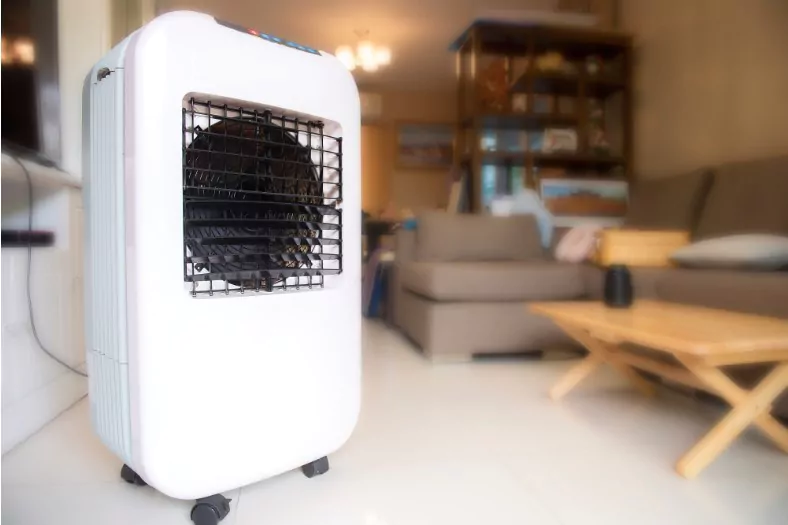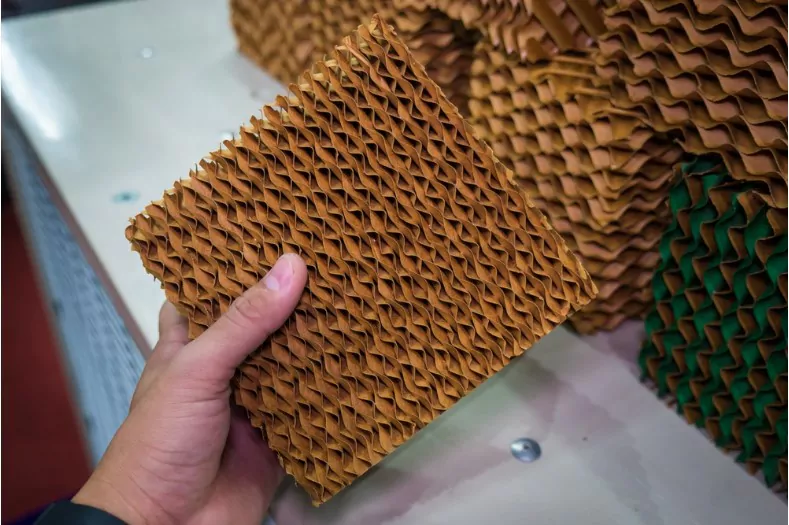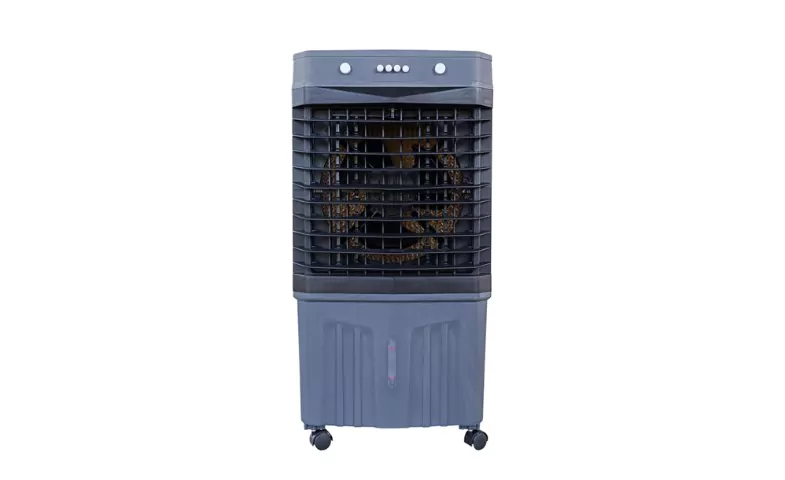Beat the Heat: How Does Evaporative Air Cooler Work?

Air conditioning is a vital part of many households, offices, and public places, especially during the hot summer months. While traditional air conditioners have been popular, the concept of evaporative cooling has gained traction in recent years. This article seeks to unravel how the evaporative air cooler, often termed the swamp cooler or desert cooler, works, and its benefits.
1 What is Evaporative Cooling?
Evaporative cooling systems, distinct from conventional air conditioning, leverage a natural phenomenon: when water evaporates, it absorbs heat energy, leading to a drop in air temperature. This cooling effect is the fundamental principle behind how an evaporative cooling system operates.
2 How does evaporative air cooler works?
An evaporative air cooler, often referred to as a swamp cooler, desert cooler, or wet air cooler, is a device that cools air through the evaporation of water. It capitalizes on the principle that when water evaporates, it absorbs heat from its surroundings, leading to a decrease in air temperature. Let’s delve into the specific mechanisms that enable an evaporative air cooler to function:
- Air Intake: The first step in the cooling process involves drawing warm and dry air from the outside environment into the evaporative cooler.
- Passing Air Over Wet Media: Inside the cooler, the warm air is passed over water-saturated pads or a wetted medium. These pads are kept wet by a water pump that circulates water from a reservoir at the bottom of the cooler.
- Evaporation: As the warm air flows over these water-saturated pads, the water starts to evaporate. During this evaporation process, the water molecules consume heat energy from the air to change from liquid to vapor. This absorption of heat cools the air.
- Circulating Cooled Air: The cooler has a fan or blower that helps in circulating the now-cooled and slightly humidified air throughout the intended space, such as a room or a building.
- Expelling Warm Air: Since the evaporative cooler is continually drawing in warm air and releasing cooler air, there needs to be a way for the warm indoor air to exit, preventing over-pressurizing the space. This process ensures a continuous flow of fresh air. In practical applications, windows or vents can be slightly opened to allow the warmer, more humid air to escape, maintaining a balance and preventing excessive humidity build-up.
- Water Refilling: As water from the reservoir is used up in the evaporation process, the level goes down. Many coolers have an automatic refill mechanism connected to a water source. In others, you might need to refill the reservoir manually.
Limitations
However, it’s essential to understand that evaporative air coolers work best in dry and hot climates. In areas with high humidity, their efficiency drops because the air has less capacity to absorb additional moisture, limiting the cooling effect.
In summary, an evaporative air cooler works by exploiting the natural process of water evaporation to cool the air. It’s an energy-efficient and environmentally friendly way to stay comfortable, especially in hot, arid climates.
Direct vs. Indirect Evaporative Cooling
The evaporative cooling process can be classified into two types: direct evaporative cooling and indirect evaporative cooling.
- Direct Evaporative Cooling Process: In direct evaporative coolers, warm air from the outdoors is drawn into the cooler, passing over water-saturated pads. As the hot air flows over these pads, water evaporates, lowering the air temperature and increasing its humidity. The cooled air is then directed into the desired space, replacing the warmer indoor air which is expelled outside.
- Indirect Evaporative Cooling: In this approach, the evaporative cooling system employs a heat exchanger, allowing the incoming air to be cooled indirectly. The primary advantage is that it cools the air without increasing its humidity. Warm air, when passed over the water, causes evaporation in a separate air stream. This evaporated water then cools the heat exchanger, which in turn cools the incoming air without adding moisture.
Key Components of an Evaporative Cooler

- Cooling Pads: These are essential for both direct and indirect evaporative cooling. Their main job is to provide a large surface area for water evaporation.
- Water Pump: Circulates water from the reservoir, wetting the cooling pads.
- Fans or Blowers: Facilitate air flow through the unit, ensuring efficient distribution of cooled air.
Factors Impacting Cooling Performance
Several variables play a part in the effectiveness of an evaporative cooler.
- Dry Bulb and Wet Bulb Temperature: The dry bulb temperature indicates the ambient air temperature, while the wet bulb temperature is the lowest temperature that can be reached through the process of evaporation. The difference between these temperatures, combined with relative humidity, can influence the cooler’s performance.
- Relative Humidity: One might wonder about the efficiency of evaporative coolers in humid climates. Since these devices depend on evaporating water to cool, their cooling capability can be restricted in areas with high humidity.
- Water Quality: The quality of water used in the evaporative system can impact the longevity of the cooling pads and the overall efficiency of the cooler.
- Wind Speed and Air Flow: The rate at which outdoor air is introduced into the cooler and the speed at which it’s expelled can significantly influence the temperature of the air leaving the unit.
Benefits of Evaporative Cooling
- Energy Efficiency: Evaporative coolers consume significantly less power than conventional air conditioning. This translates to reduced energy bills.
- Better Indoor Air Quality: The constant air flow ensures fresh air, replacing stale indoor air.
- Eco-friendly: Refrigerated air conditioning systems utilize coolants that can be harmful to the environment. In contrast, evaporative coolers use water, a natural coolant.
- Cost-Effective: Besides lower energy consumption, the installation and maintenance costs of evaporative coolers are typically less than those of traditional air conditioners.
A Few Considerations
While there are many advantages to evaporative cooling systems, they might not be the best fit for everyone. In regions where the air is already humid, the cooling effect can be limited. Moreover, as the system relies on water evaporation, water availability and quality become crucial.
3 What is evaporative cooling and why is it good?
Evaporative cooling is a natural process that cools air through the evaporation of water. The concept is simple but effective: when water turns from a liquid to a vapor (evaporates), it absorbs heat, resulting in a drop in the temperature of the surrounding air. This is the same cooling mechanism you feel when you get out of a pool on a breezy day; as the water evaporates from your skin, you feel cooler.
The Mechanism of Evaporative Cooling
- Air Intake: An evaporative cooler draws in warm air from the outside environment.
- Cooling: This warm air is then passed over water-saturated pads or some form of wetted media. As the air passes over these pads, water from the pads evaporates, which absorbs heat from the air.
- Delivery of Cooled Air: A fan or blower then circulates the cooled, humidified air throughout the space.
- Expelling Warm Air: Since the cooler is constantly drawing in warm air and releasing cool air, some indoor air must be expelled to prevent over-pressurizing the space. This ensures a continuous flow of fresh air.
Why is Evaporative Cooling Good?

- Energy Efficiency: Evaporative coolers use significantly less electricity than traditional air conditioning systems because they only require energy to pump water and power the fan. There are no energy-intensive compressors or refrigerants involved.
- Eco-friendly: Unlike conventional air conditioning units that use refrigerants, which can be harmful to the environment, evaporative coolers use water as the cooling medium. This makes them more environmentally friendly.
- Cost-effective: Evaporative coolers typically have lower installation, operation, and maintenance costs compared to conventional air conditioning systems.
- Improved Air Quality: Evaporative coolers constantly draw in fresh outdoor air, unlike traditional air conditioners which recirculate the same indoor air. This means there is a continuous supply of fresh air, reducing the build-up of pollutants and contaminants.
- Increased Humidity: In dry climates, the added humidity from an evaporative cooler can make indoor conditions more comfortable and can be beneficial for wooden furniture, musical instruments, and even human skin by preventing excessive dryness.
- Simple Operation and Maintenance: Without complex components like compressors and coils, evaporative coolers are relatively straightforward to operate, and maintenance typically involves straightforward tasks like cleaning or replacing the pads and ensuring the water supply is clean.
4 Wrapping Up
Evaporative air coolers offer an efficient and environmentally-friendly alternative to traditional air conditioning systems. Understanding the underlying principles of how evaporative cooling works can help consumers make informed choices and optimize their cooling solutions during the sweltering cooling season. Whether you’re considering a direct evaporative cooling process or its indirect counterpart, it’s clear that these systems, with their innate ability to harness the latent heat of vaporization, have carved a niche in the world of cooling solutions.
Community Q&A
About This Article
This article has been viewed 419 times.



